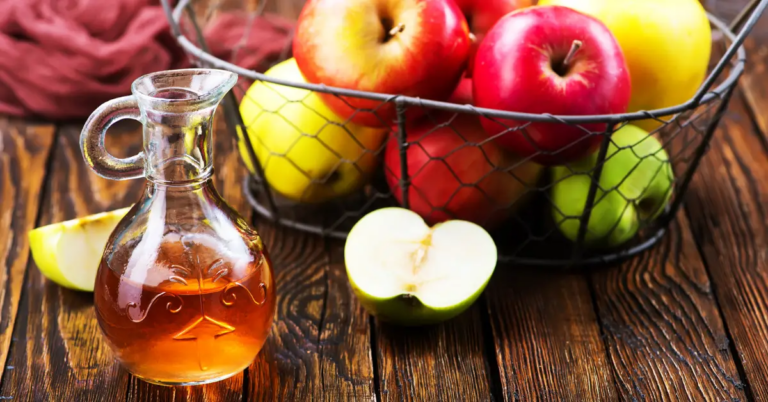Once celebrated as the crown jewel of superfoods, kale’s reputation has recently taken a twist. While kale is undoubtedly packed with vital nutrients, it has also been implicated in digestive issues, kidney stones, and more due to its high oxalic acid content.
This article delves deep into the nutritional enigma that is kale, looking at its history, health benefits, potential risks, and tips on its optimal consumption.
A Brief History of Kale
In an intriguing turn of events, kale, one of the trendiest health foods of today, found its initial fame as a garnish adorning pizza and salad bars. Back in the 1990s, Pizza Hut, a global fast-food chain, was known to be the largest buyer of kale in the US, utilizing the leafy green purely for its aesthetic appeal. [1,2]
The narrative around kale underwent a radical shift when its impressive nutritional profile was uncovered, combined with pretty good PR. People soon began to consume kale as a food source, acknowledging its rich reservoir of vitamins A, K, B6, and C, along with other vital minerals like calcium, potassium, copper, and manganese. [3]
However, like any hero with a dark secret, kale harbored an antinutrient, oxalic acid — later found to potentially impair health.
The Intricacies of Antinutrients
Antinutrients, as the term suggests, are components that obstruct the body’s absorption of vital nutrients. While these substances are present in many foods considered healthy, they can potentially result in adverse health impacts.
Some commonly found antinutrients include protease inhibitors, phytic acid, lectins, gluten, and oxalates or oxalic acid. Kale, regrettably, is significantly high in oxalates, interfering with the nutrient absorption process.
The Hidden Dangers of Oxalic Acid
Oxalic acid present in kale exhibits a disruptive influence on the body, primarily by hindering calcium absorption. Upon consumption, oxalates bind with calcium in the bloodstream to form small, sharp crystals of oxalic acid. [4,5]
These crystals can deposit in certain body parts, including the kidneys, leading to the development of kidney stones. Oxalic acid crystals can also cause vulvodynia in women, a condition characterized by painful intercourse due to oxalic acid crystals in the labia. [6]
Further, the accumulation of oxalic acid leads to an excessive buildup of calcium in areas where it shouldn’t be, negatively impacting various bodily functions. For instance, it can cause disruptions in the cardiovascular system, harm heart health, impact joint and bone health, teeth health, muscle contraction, nerve function, and more.
Moreover, oxalic acid can also trigger digestive discomfort. Many individuals experience bloating after consuming kale or other oxalate-rich foods.[7,8]
Is Kale Still Nutritious?
Kale is indeed a nutritional powerhouse, despite its oxalic acid content. As such, those with a family history of calcium-related problems should monitor their intake of oxalic acid. The oxalate content of kale can be reduced through cooking methods such as steaming or boiling, while raw kale might be a less advisable option given that antinutrients can hinder nutrient absorption.
A balanced diet, combining both cooked and raw foods, is often the best strategy. Some foods, like tomatoes, demonstrate improved nutrient absorption when cooked. Cooking tomatoes enhances the absorption of lycopene, a crucial antioxidant for heart and skin health while reducing vitamin C absorption. It is thus vital to keep oxalic acid intake in check over time to prevent its buildup in the body.
Health Benefits of Kale: More Than Just a Pretty Green
Despite its high oxalic acid content, when consumed in moderation, kale provides numerous health benefits:
- Rich in Nutrients: Kale is brimming with vitamins A, K, B6, and C, which support various health functions, including immune function, vision, bone health, and collagen production.
- High in Antioxidants: Kale is abundant in powerful antioxidants like beta-carotene, lutein, and zeaxanthin, which help combat oxidative stress and reduce the risk of chronic diseases.
- Anti-Inflammatory Properties: The antioxidants and phytonutrients in kale exhibit anti-inflammatory effects, potentially reducing the risk of chronic inflammation-related conditions such as heart disease and arthritis.
- Supports Digestive Health: Kale, being an excellent source of dietary fiber, promotes healthy digestion, prevents constipation, and fosters a healthy gut microbiome.
- Promotes Cardiovascular Health: Kale contains compounds shown to lower cholesterol levels and reduce the risk of heart disease.
- Enhances Bone Health: Rich in calcium, kale supports strong and healthy bones. It also contains vitamin K, a vital element in bone metabolism.
- Aids in Weight Management: Low in calories and high in fiber, kale is a valuable addition to a weight loss or weight management diet. The fiber content promotes satiety and helps curb overeating. [9,10,11]

Studies That Prove Kale’s Benefits
Scientific studies have documented and proven the various health benefits associated with kale.
A study published in Biomedical and Environmental Sciences demonstrated a reduced risk of coronary heart disease among hypercholesterolemic men who regularly drank kale juice with meals. [12]
Additionally, research in the American Journal of Clinical Nutrition showed a reduced risk of hip fractures in women with a higher intake of vitamin K-rich foods, including kale.[13]
Meanwhile, research in The Journal of Nutrition explored how antioxidants like vitamins C and E, which are found in kale, can protect our bodies from damage and help prevent chronic diseases. These antioxidants are particularly effective in various parts of our bodies, like the blood, fat-carrying molecules, and cells grown in laboratories. [14]
Research published in Electrophoresis demonstrated the cholesterol-lowering effects of kale, as well as dill, in individuals with high cholesterol levels. [15]
Kale’s rich nutrient content and potential health benefits must be weighed against the risk of its oxalic acid content. With this knowledge, it becomes evident that the issue with kale lies not in the vegetable itself but in the quantities consumed and how it’s prepared.
While kale’s oxalic acid content could pose certain health risks, a balanced approach to consumption and the utilization of proper cooking methods can help minimize these risks. Opting for a varied diet with an assortment of both cooked and raw foods can help counter the negative effects of antinutrients.
My Personal RX for Overall Health
As a physician, my advice is always centered on balance and personalization regarding diet and nutrition. The fact remains that a healthy diet isn’t a one-size-fits-all proposition; what works wonders for one person might not have the same effects on another. Individual genetic makeup, gut microbiome composition, lifestyle, and personal health history all play a significant role in how we respond to different foods.
Here’s my personal prescription (RX) for a healthier lifestyle:
1. Aim for Balance: Don’t get caught up in the superfood hype. Every food has its pros and cons. Even though kale has many health benefits, overconsumption may lead to issues due to its high oxalic acid content. The key is balance — including a variety of fruits, vegetables, proteins, and fats in your diet is essential to get the necessary nutrients for overall health.
2. Listen to Your Body: Pay close attention to how certain foods make you feel. If you notice bloating, discomfort, or any other adverse reactions after eating a specific food, it may not be the right choice for you, even if it is generally considered healthy.
3. Consult Professionals: Reach out to healthcare professionals for personalized advice. A registered dietitian can provide guidance tailored to your specific needs and health conditions.
4. Education Is Key: To help you navigate the complex world of nutrition and health, I highly recommend downloading a free copy of my Protocol. It’s a comprehensive, 50-page step-by-step guide designed to empower you to make significant changes to your health and life. The Protocol will provide valuable insights into nutrition, physical activity, stress management, and other vital aspects of health and wellness. Download the Protocol ebook here.

5. Add Supplements Wisely: If you want to enhance your nutritional intake, consider my Complete Turmeric Matrix supplement. Turmeric has been studied extensively for its antioxidant and anti-inflammatory properties. It can support immune health, joint function, and overall wellness as part of a balanced diet. Always remember to consult with a healthcare professional before starting any new supplement regimen. Find the Complete Turmeric Matrix supplement here.
Remember that your health is unique to you. It’s essential to make dietary and lifestyle decisions that resonate with your personal needs and goals. As always, consult with healthcare professionals and trusted sources to ensure you’re on the right track to optimal health.
How to Eat and Enjoy Your Kale: Sauteed Kale with Garlic and Onions
Eating healthy doesn’t have to be boring or tasteless. Here’s a recipe that showcases kale in a delicious, wholesome, and balanced way, reducing its oxalate content and boosting its nutrient availability, nutritious and delightful meal or side dish. Enjoy!
Ingredients:
- 1 bunch of kale
- 2 tablespoons of olive oil
- 1 onion, diced
- 3 cloves of garlic, minced
- Salt, to taste
- Black pepper, to taste
- Red pepper flakes, optional
- 1 tablespoon of lemon juice
- 2 tablespoons of water
Instructions:
1. Prep the Kale: Rinse the kale leaves thoroughly under cold water to remove any dirt or grit. Pat dry using a clean kitchen towel. Remove the tough stems and roughly chop the leaves.
2. Saute the Aromatics: Heat the olive oil in a large skillet over medium heat. Add the diced onions and saute until they are translucent (about 5 minutes). Add the minced garlic and continue to saute for another minute until the garlic is fragrant.
3. Cook the Kale: Add the chopped kale to the skillet. It might seem like a lot of kale at first, but it will wilt down significantly as it cooks. Stir the kale to coat it in the oil, garlic, and onions.
4. Season and Simmer: Season the kale with salt and pepper. If you like a bit of heat, sprinkle in some red pepper flakes. Add the water and cover the skillet. Let the kale simmer for about 5-10 minutes, or until it is as tender as you like it.
5. Finish and Serve: Once the kale is cooked to your liking, remove the lid and let any remaining water evaporate. Sprinkle the kale with the lemon juice, give it one last stir, and taste for seasoning. Adjust the salt, pepper, or lemon juice as needed.
You can adapt this recipe to your taste and dietary needs. Consider adding more vegetables, some grilled chicken, or your favorite spices to make it even more delicious!

- Npr. (2015, March 19). The best piece of trivia you learned this week: Pizza Hut Edition. NPR. https://www.npr.org/2015/03/19/393823329/the-best-piece-of-trivia-you-learned-this-week-pizza-hut-edition
- Weiss, S. (2022, April 8). Pizza Hut Was Once One of the Largest Kale Buyers in the U.S. — Here’s the Strange Reason Why. Peoplemag. https://people.com/food/pizza-hut-used-to-be-the-largest-kale-buyer-in-the-u-s-heres-the-strange-reason-why/
- Mahan, K. (2016, February 24). The Real Story Behind How Kale Became Famous. Yahoo. https://www.yahoo.com/lifestyle/real-story-behind-kale-became-000000110.html
- Nayagam, J. R., & Rajan, R. (2021). Calcium Oxalate Crystals as Raw Food Antinutrient: A Review. Journal of Pharmaceutical Research International, 33(41B), 295-301. https://doi.org/10.9734/jpri/2021/v33i41B32368
- BENWAY, D. A., & WEAVER, C. M. (1993). Assessing chemical form of calcium in wheat, spinach, and kale. Journal of food science, 58(3), 605-608. https://doi.org/10.1111/j.1365-2621.1993.tb04335.x
- Harlow, B. L., Abenhaim, H. A., Vitonis, A. F., & Harnack, L. (2008). Influence of dietary oxalates on the risk of adult-onset vulvodynia. The Journal of Reproductive Medicine, 53(3), 171-178. https://pubmed.ncbi.nlm.nih.gov/18441720/
- Okombo J, Liebman M. Probiotic-induced reduction of gastrointestinal oxalate absorption in healthy subjects. Urol Res. 2010;38(3):169-178. https://doi.org/10.1007/s00240-010-0262-9
- Ettinger, B., Pak, C. Y., Citron, J. T., Thomas, C., Adams-Huet, B., & Vangessel, A. (1997). Potassium-magnesium citrate is an effective prophylaxis against recurrent calcium oxalate nephrolithiasis. The Journal of urology, 158(6), 2069-2073. https://doi.org/10.1016/S0022-5347(01)68155-2
- Kale, raw. (n.d.). FoodData Central. https://fdc.nal.usda.gov/fdc-app.html#/food-details/323505/nutrients
- Sikora, E., & Bodziarczyk, I. (2012). Composition and antioxidant activity of kale (Brassica oleracea L. var. acephala) raw and cooked. Acta Scientiarum Polonorum Technologia Alimentaria, 11(3), 239-248. https://www.food.actapol.net/pub/3_3_2012.pdf
- Satheesh, N., & Workneh Fanta, S. (2020). Kale: Review on nutritional composition, bio-active compounds, anti-nutritional factors, health beneficial properties and value-added products. Cogent Food & Agriculture, 6(1), 1811048. https://doi.org/10.1080/23311932.2020.1811048
- Kim SY, Yoon S, Kwon SM, Park KS, Lee-Kim YC. Kale juice improves coronary artery disease risk factors in hypercholesterolemic men. Biomed Environ Sci. 2008;21(2):91-97. https://doi.org/10.1016/S0895-3988(08)60012-4
- Feskanich D, Weber P, Willett WC, Rockett H, Booth SL, Colditz GA. Vitamin K intake and hip fractures in women: a prospective study. Am J Clin Nutr. 1999;69(1):74-79. https://doi.org/10.1093/ajcn/69.1.74
- Frei B. Efficacy of dietary antioxidants to prevent oxidative damage and inhibit chronic disease. J Nutr. 2004;134(11):3196S-3198S. https://doi.org/10.1093/jn/134.11.3196S
- Danesi F, Govoni M, D’Antuono LF, Bordoni A. The molecular mechanism of the cholesterol-lowering effect of dill and kale: The influence of the food matrix components. Electrophoresis. 2016;37(13):1805-1813. https://doi.org/10.1002/elps.201600033


















